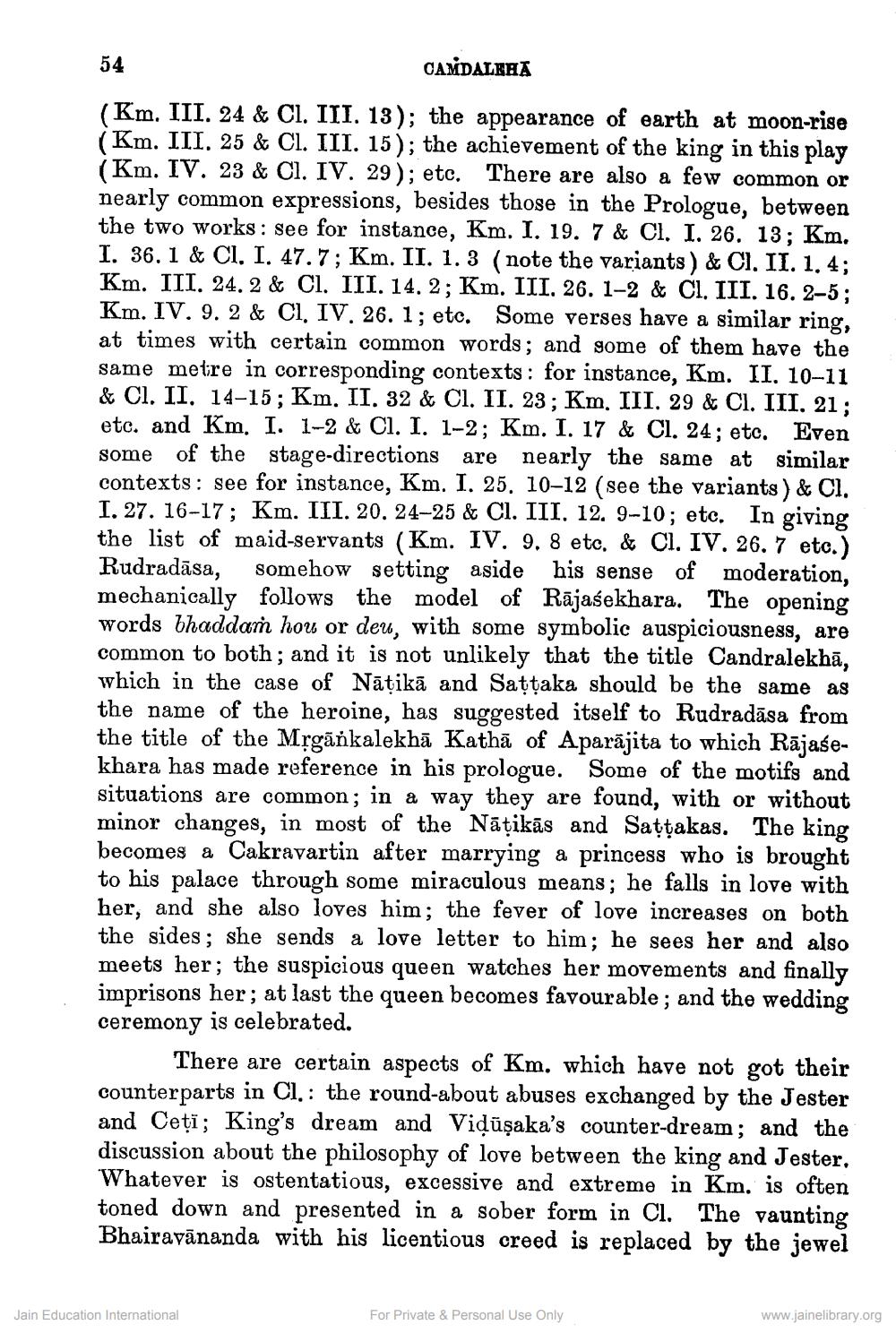________________
54
CAMDALEHA
(Km. III. 24 & Cl. III. 13); the appearance of earth at moon-rise (Km. III. 25 & Cl. III. 15); the achievement of the king in this play (Km. IV. 23 & Cl. IV. 29); etc. There are also a few common or nearly common expressions, besides those in the Prologue, between the two works: see for instance, Km. I. 19. 7 & Cl. I. 26. 13; Km. I. 36. 1 & Cl. I. 47.7; Km. II. 1. 3 (note the variants) & Cl. II. 1. 4; Km. III. 24. 2 & Cl. III. 14. 2; Km. III. 26. 1-2 & Cl. III. 16. 2-5; Km. IV. 9. 2 & Cl. IV. 26. 1; etc. Some verses have a similar ring, at times with certain common words; and some of them have the same metre in corresponding contexts: for instance, Km. II. 10-11 & Cl. II. 14-15; Km. II. 32 & Cl. II. 23; Km. III. 29 & Cl. III. 21; etc. and Km. I. 1-2 & Cl. I. 1-2; Km. I. 17 & Cl. 24; etc. Even some of the stage-directions are nearly the same at similar contexts: see for instance, Km. I. 25. 10-12 (see the variants) & Cl. I. 27. 16-17; Km. III. 20. 24-25 & Cl. III. 12. 9-10; etc. In giving the list of maid-servants (Km. IV. 9. 8 etc. & Cl. IV. 26. 7 etc.) Rudradāsa, somehow setting aside his sense of moderation, mechanically follows the model of Rajasekhara. The opening words bhaddam hou or deu, with some symbolic auspiciousness, are common to both; and it is not unlikely that the title Candralekhā, which in the case of Natikā and Saṭṭaka should be the same as the name of the heroine, has suggested itself to Rudradāsa from the title of the Mrgaňkalekha Katha of Aparajita to which Rājasekhara has made reference in his prologue. Some of the motifs and situations are common; in a way they are found, with or without minor changes, in most of the Natikās and Saṭṭakas. The king becomes a Cakravartin after marrying a princess who is brought to his palace through some miraculous means; he falls in love with her, and she also loves him; the fever of love increases on both the sides; she sends a love letter to him; he sees her and also meets her; the suspicious queen watches her movements and finally imprisons her; at last the queen becomes favourable; and the wedding ceremony is celebrated.
There are certain aspects of Km. which have not got their counterparts in Cl.: the round-about abuses exchanged by the Jester and Ceți; King's dream and Viḍūṣaka's counter-dream; and the discussion about the philosophy of love between the king and Jester. Whatever is ostentatious, excessive and extreme in Km. is often toned down and presented in a sober form in Cl. The vaunting Bhairavananda with his licentious creed is replaced by the jewel
Jain Education International
For Private & Personal Use Only
www.jainelibrary.org




